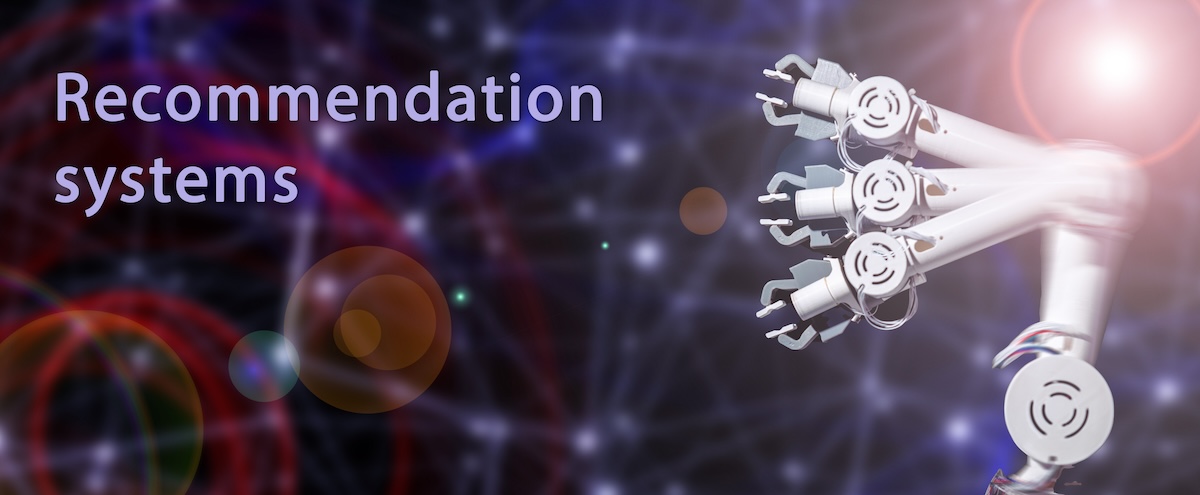Table of Contents
April 11
- Choose a company
Team Amas 1
Team Soul, The Waves
The Barks





Team Chemistree, Lidia
Neighbors, Team V
2. Read and Answer the questions. Each team member should perform the required tests and compare their results with those of other team members.
Netflix
Read the following resources:
Chong, D. (2021, December 14). Deep Dive into Netflix’s Recommender System – Towards Data Science. Medium. https://towardsdatascience.com/deep-dive-into-netflixs-recommender-system-341806ae3b48
https://dl.acm.org/doi/10.1145/2843948
- How does Netflix personalize its services for every user? Explain as many personalization tactics as possible.
- What type of recommender system does Netflix use? Briefly describe the data the company collects and which algorithms or systems it uses to provide recommendations.
- How can Netflix’s recommender system reinforce biases, especially in the “Trending” section? Propose a strategy to introduce more content diversity without sacrificing personalization.
- Go to your Netflix account and evaluate the recommendations you receive. If you can’t find your viewing history, go to your profile and take a moment to browse under the “Viewing Activity” section. Analyze the content you watched, and briefly describe if you think your recommendations are similar to what you interacted with. Compare the recommendations to the recommendations your team members receive.
- Analyze how Netflix’s recommendations contribute to your overall satisfaction with the platform. Do you often binge-watch content, or does the recommendation system sometimes fail to keep you engaged long-term? Compare with your team members.
Youtube
YouTube and movie recommendation systems using machine learning. (2023, March 2). IEEE Conference Publication | IEEE Xplore. https://ieeexplore.ieee.org/document/10084999
Lubos, S., Felfernig, A., & Tautschnig, M. (2023). An overview of video recommender systems: state-of-the-art and research issues. Frontiers in Big Data, 6. https://doi.org/10.3389/fdata.2023.1281614
- What type of recommender system does Youtube use? Briefly describe the data the company collects and which systems it uses to provide recommendations.
- YouTube is accused of spreading extremist content. Test the algorithms by logging in to your account and trying to find more extremist-leaning videos; see if the videos you are recommended enhance extremist ideas or offer a broader point of view. Compare with your team members.
- How can YouTube adapt its algorithms to increase personalization and long-term user satisfaction?
- Each team member should intentionally diversify their viewing patterns, consuming videos from various genres (e.g., music, education, vlogs, news). Track how recommendations evolve in response to this diversity. Does YouTube show a bias toward specific genres?
- How does YouTube’s algorithm prioritize new or trending content versus personalized recommendations based on your viewing history?
X
Corsi, G. (2024). Evaluating Twitter’s algorithmic amplification of low-credibility content: an observational study. EPJ Data Science, 13(1). https://doi.org/10.1140/epjds/s13688-024-00456-3
X. (2024). Recommender Systems. https://help.x.com/en/resources/recommender-systems.
- How does X provide recommendations to users? What are the different components of their recommender system? ( Tip: X’s public repository of algorithms)
- Each group will create new X accounts to follow Republican-leaning political figures, media outlets, and influencers. Another set of accounts will follow Democratic-leaning figures. Over a few days, team members should engage with the content (liking, retweeting, commenting) and track how the recommendations evolve. How does engagement with specific political content affect the type of posts and user recommendations? Is there a difference in the recommendations after interacting with content from one political side?
- How can X improve its account recommendation system to foster user growth and platform satisfaction?
- How does X’s engagement-based recommender system contribute to amplifying certain types of content, and what are the potential risks associated with this content promotion?
- Does X’s recommender system prioritize Musk’s content more than other influential figures? Is there a noticeable amplification of his activity compared to other high-engagement accounts? Analyze how the system balances visibility for influential figures and whether specific individuals receive more algorithmic promotion.
Spotify
Acker, B., & Way, S. F. (2024). Socially-Motivated Music Recommendation. Proceedings of the International AAAI Conference on Web and Social Media, 18(1), 879-890. https://doi.org/10.1609/icwsm.v18i1.31359
Mangla, P. (2024, February 13). Spotify song recommendation Systems – PyImageSearch. PyImageSearch. https://pyimagesearch.com/2023/10/30/spotify-music-recommendation-systems/
https://research.atspotify.com/search-recommendations
- How does Spotify’s recommendation system work? Describe which type of data it collects and how it uses it to provide personalized recommendations.
- Teams should create shared playlists or engage in group listening sessions to see how collaborative activities affect individual recommendations.
- How does Spotify’s recommendation system impact your overall satisfaction with the platform? Do you find yourself discovering new music, or does the platform often repeat familiar tracks? How does this affect your listening habits? Compare the answers of different team members.
- How can Spotify improve its account recommendation system to foster user growth and platform satisfaction?
- How can Spotify change its recommender system to give more opportunities to smaller artists?
Tiktok
If you mainly use Douyin instead of Tiktok, you can answer the questions below about Douyin.
https://www.sciencedirect.com/science/article/pii/S2667325821002235
Boeker, M., & Urman, A. (2022, April). An empirical investigation of personalization factors on TikTok. In Proceedings of the ACM Web Conference 2022 (WWW ’22). ACM. https://doi.org/10.1145/3485447.3512102
- How does Tiktok’s (or Douyin’s) recommendation engine work? Briefly describe the data it records and how it provides personalized suggestions to users.
- Each group member should engage with specific types of content for three days (such as gaming, travel, fashion, etc.). Afterward, note how TikTok’s recommendations change over time. Compare your findings.
- How different is Tiktok’s content recommendation system in China and the USA? Is the type of recommended content different in both countries?
- How can Tiktok improve its recommendations to increase user satisfaction?
- Do you feel that TikTok’s recommendations are tailored to your interests? Do you often spend more time on the platform than expected because of the content recommended to you? Compare your experience with that of your group members.
